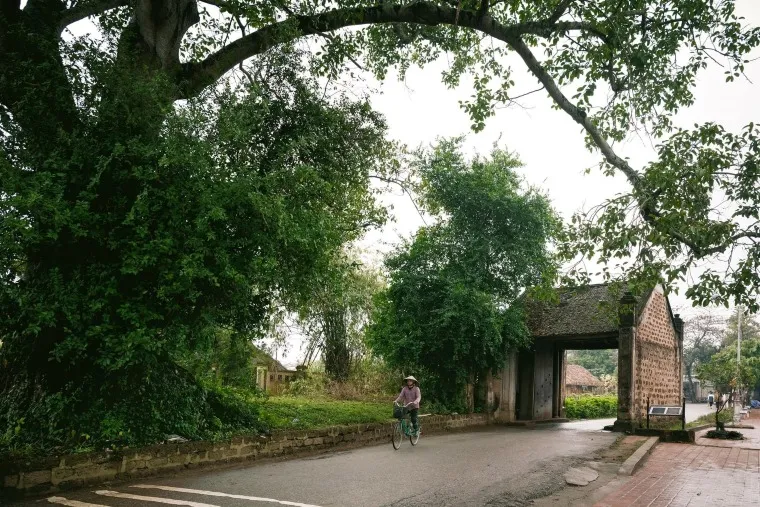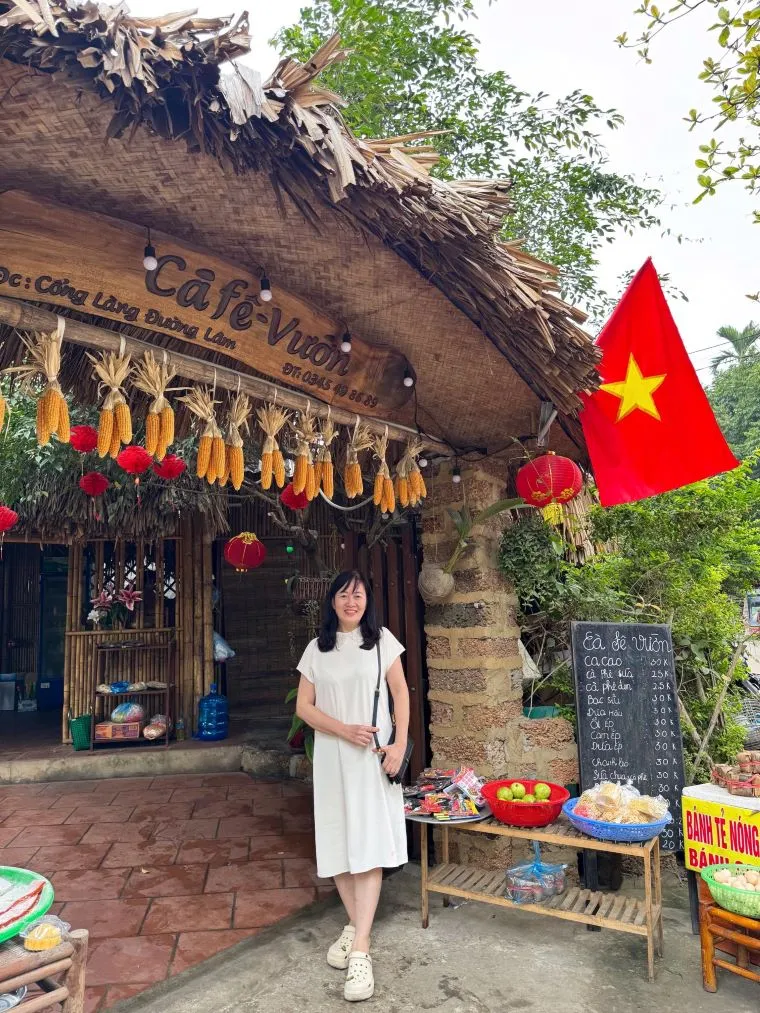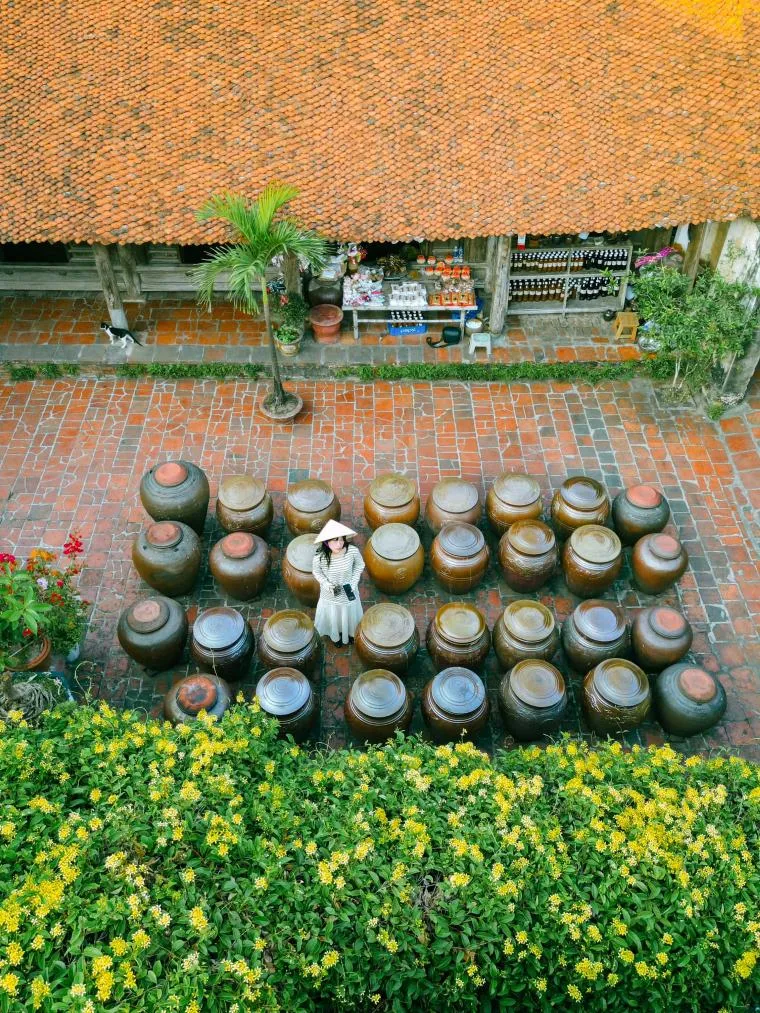Duong Lam Ancient Village: A Journey Through Vietnam's Living Heritage
Nestled approximately 44 kilometers from the bustling heart of Hanoi lies Duong Lam Ancient Village, a remarkable testament to Vietnam's rich cultural tapestry and architectural heritage. This well-preserved village offers visitors a rare glimpse into traditional rural life that has remained largely unchanged for centuries, making it an essential destination for travelers seeking authentic cultural experiences beyond the typical tourist trail.
A Living Museum of Vietnamese Rural Heritage
Duong Lam is not just a heritage site—it's the first ancient village in Vietnam recognized as a national historical and cultural relic. Unlike static museums, this village remains a vibrant community where daily life continues amid ancient surroundings. What makes Duong Lam exceptional is its status as a living village. Its residents, many descended from families who have lived here for generations, maintain the homes, traditions, and rhythms of rural life with remarkable authenticity.

Duong Lam Ancient Village is a peaceful destination that preserves the traditional architecture of Northern Vietnam - Facebook Việt Nam Ơi
The village is home to nearly 1,000 traditional houses, some over 300 years old. Built with laterite stone and clay bricks unique to the area, these homes showcase classic northern Vietnamese architecture—wooden beams, tiled roofs, airy courtyards, and intricate carvings. Wandering through its labyrinth of narrow lanes offers a truly immersive experience that transports you into Vietnam’s past.
Architectural Marvel: The Ancient Houses of Duong Lam
Life in Duong Lam follows the seasons. The majority of residents still engage in traditional agriculture, especially rice farming. Depending on the time of year, visitors may see villagers planting, harvesting, or drying rice in the sun, often using age-old methods passed down through generations.
The village is also known for its traditional crafts. Several families continue to make soy sauce, rice wine, and rice paper using centuries-old recipes. These are not simply souvenirs but integral parts of local life and cuisine.

The village’s rustic charm is captured in its ancient houses made from laterite stone and thatched roofs. - Facebook Cao Thu Phương
Culinary traditions are another highlight. Duong Lam is famed for its “che lam”—a chewy, sweet treat made from glutinous rice, ginger, and peanuts—as well as its distinctive soy sauce, brewed using methods unchanged for hundreds of years.
After wandering the ancient alleys and tasting these local flavors, many travelers find themselves craving more of Northern Vietnam’s culinary wonders. A perfect next stop? Hanoi’s Old Quarter, where you can dive into legendary dishes like Pho Thin Hanoi, famous for its smoky broth and stir-fried beef, or hunt down the Best Bun Thang Hanoi, a delicate bowl layered with shredded chicken, egg, and fragrant herbs, a true symphony of taste rooted in the capital’s heritage.
The Natural Landscape: Peaceful Rural Surroundings
Surrounding Duong Lam is a landscape of lush rice fields, bamboo groves, and lotus ponds, largely untouched by modern development. This peaceful rural setting enhances the sense of stepping back in time.
Massive banyan trees, some several hundred years old, stand sentinel at village gates and communal spaces. In Vietnamese culture, these trees are sacred, symbolizing wisdom and endurance.

Duong Lam is known for its rich cultural heritage, offering a glimpse into Vietnam's rural life. - Facebook: Hoàng Thị Hiếu
Many households incorporate ponds and wells into their courtyards, used not only for practical purposes but also aligned with feng shui principles believed to ensure harmony and prosperity.
Traditional laterite village gates mark the entrance, weathered by centuries of wind and rain, silently witnessing the generations that have passed through.
Experiencing Duong Lam: Visitor's Guide
Getting There
Duong Lam Ancient Village is located approximately 44 kilometers northwest of Hanoi in Son Tay district. The journey takes around 1.5-2 hours depending on traffic conditions.
By Motorbike: For independent travelers comfortable with Vietnam's traffic, renting a motorbike in Hanoi offers the most flexible way to reach Duong Lam. The route takes you through picturesque countryside and provides opportunities to stop at points of interest along the way.
By Public Transport: Budget-conscious travelers can take public bus #71 from My Dinh Bus Station in Hanoi to Son Tay town, then hire a motorbike taxi (xe om) for the short remaining distance to Duong Lam.
By Private Car/Taxi: For convenience and comfort, arranging a private car or taxi from Hanoi is recommended, especially for groups or families. This option allows for door-to-door service and flexibility in timing.
Guided Tours: Numerous tour operators in Hanoi offer day trips to Duong Lam, typically including transportation, guide services, and sometimes meals. hese tours often combine Duong Lam with nearby attractions like the Tay Phuong or Thay Pagodas. Sometimes, they even include a quick stop by Turtle Tower Hoan Kiem Lake. This gives visitors a beautiful contrast between Hanoi’s historic heart and the rustic charm of the countryside.
Best Time to Visit
Duong Lam can be visited year-round, but the experience varies significantly with the seasons:
Spring (February-April): Perhaps the most atmospheric time to visit, when the village comes alive with traditional Tet (Lunar New Year) celebrations and spring festivals. The weather is mild with occasional light rain, creating misty, photogenic landscapes.
Autumn (September-November): The most comfortable season weather-wise, with clear skies, moderate temperatures, and lower humidity. The surrounding rice fields turn golden as harvest approaches, creating stunning photo opportunities.
Summer (May-August): While hot and humid with frequent afternoon thunderstorms, summer offers lush green landscapes as rice paddies reach their full growth. Visit early in the morning to avoid the midday heat.
Winter (December-January): Cooler temperatures and occasional drizzle create a different atmosphere. Though less colorful than other seasons, winter offers a more contemplative experience with fewer tourists.

The peaceful rural landscape of Duong Lam makes it an ideal destination for those seeking tranquility. - Facebook Hồ Thiên Nga
Essential Experiences
Walking Tour: The best way to experience Duong Lam is on foot, wandering through its narrow lanes and discovering its hidden corners. The village is compact enough to explore in a day, though rushing would miss the point of visiting this tranquil place.
Ancient House Visits: Several well-preserved ancient houses are open to visitors, including the Hung Thinh and Mong Phu houses. Homeowners often serve as informal guides, sharing stories about their ancestral dwellings and traditional lifestyle.
Cultural Demonstrations: Some households offer demonstrations of traditional activities like rice wine brewing, soy sauce making, or rice paper production. These hands-on experiences provide insight into vanishing rural crafts.
Local Cuisine: Don't miss sampling local specialties at small eateries within the village. Particularly recommended are "che lam" (ginger-peanut sticky rice cakes) and meals featuring the village's famous soy sauce.
Bicycle Exploration: Renting a bicycle is an excellent way to explore both the village and surrounding countryside at a leisurely pace, allowing you to venture to outlying temples and scenic spots.
Photography: With its ancient architecture, traditional activities, and photogenic landscapes, Duong Lam offers endless opportunities for photography enthusiasts. Early morning and late afternoon provide the most favorable light.
Cultural Etiquette
When visiting Duong Lam, remember that you're entering not just a historical site but people's homes and a living community:
-
Ask permission before photographing residents or entering private areas of homes
-
Dress modestly, particularly when visiting temples and spiritual sites
-
Remove shoes when entering houses, temples, and other traditional buildings
-
Make small donations when visiting family homes that are open to tourists
-
Speak quietly and behave respectfully, especially during ceremonies or community gatherings
-
Consider purchasing local products as a way of supporting the village economy
Preservation Challenges and Sustainable Tourism
As a living village, Duong Lam faces the complex task of balancing modern development with heritage preservation. Since its designation as a cultural relic in 2005, tourism has grown, bringing both support and strain.
Residents face pressures to modernize—installing plumbing, electricity, and modern comforts into ancient homes—without compromising structural or aesthetic integrity. Government programs and community-based tourism initiatives aim to restore homes sustainably, offering residents financial and technical support.

A perfect escape from the hustle and bustle of Hanoi, Duong Lam offers a serene, timeless experience. - Facebook Hồ Thiên Nga
However, maintaining these historic houses is costly. Traditional materials and craftsmanship are increasingly scarce, and climate change brings additional threats like heavy rains and flooding.
Visitors can help by practicing responsible tourism, supporting local businesses, respecting privacy, and promoting awareness of the village’s heritage.
Beyond the Village: Nearby Attractions
While Duong Lam itself deserves a full day's exploration, the surrounding area offers several complementary attractions that can be combined for a more comprehensive cultural experience:
Tay Phuong Pagoda: Located about 15 kilometers from Duong Lam, this 18th-century pagoda perched on Tay Phuong Mountain houses 76 jackfruit-wood statues considered masterpieces of Vietnamese Buddhist sculpture.
Thay Pagoda (Chua Thay): Dating from the 11th century and dedicated to Buddhist monk Tu Dao Hanh, this pagoda complex features beautiful architecture set against a backdrop of limestone mountains and reflecting pools.
Va Temple: A short distance from Duong Lam, this temple honors General Tan Vien, one of the four immortals in Vietnamese folk religion, and offers insight into indigenous spiritual beliefs.

Duong Lam offers a unique blend of history, culture and natural beauty, attracting travelers from all over. - Facebook Hồ Thiên Nga
Son Tay Ancient Citadel: Built in 1822 during the Nguyen Dynasty, this military fortress provides historical context for understanding the strategic importance of the region throughout Vietnamese history.
Dong Mo Lake: For those seeking natural beauty, this large reservoir surrounded by mountains offers boating opportunities and views of the picturesque landscape.
Combining Duong Lam with one or two of these nearby sites creates a more comprehensive understanding of the region's cultural and historical significance, though attempting to see all in a single day would be rushed.
Conclusion
Duong Lam Ancient Village is more than a historical site—it’s a living, breathing connection to Vietnam’s roots. While many heritage villages around the world have become commercialized or reconstructed for tourism, Duong Lam remains authentic, inhabited, and spiritually alive.
For Vietnamese, it’s a touchstone of cultural pride and ancestral memory. For international travelers, it’s an opportunity to step inside Vietnam’s history—not through museum displays, but through daily life, shared meals, and community traditions.
With its serene setting, friendly locals, and timeless charm, Duong Lam offers an experience unlike any other. It’s a place where the past is not just remembered but lived.
With a well-planned itinerary, budget-friendly options, and an open mind to meeting new people, your solo journey will be both fulfilling and exciting. Let Joytime be your trusted companion, providing essential travel gear to ensure comfort, safety, and convenience throughout your trip. An incredible solo adventure awaits—pack your bags and explore Hanoi with confidence!
|
Joytime Travel Agency - Travel JOY, TIMEless Vietnam Follow us for travel tips, local insights, and exclusive offers:
|

Danish Nguyen
Danish Nguyen is a renowned travel blogger in Vietnam with over 5 years of experience sharing unique travel experiences. With a passion for exploring new places, Danish captures incredible moments and provides readers with valuable tips to discover the beauty of his homeland.








.webp)
.webp)








